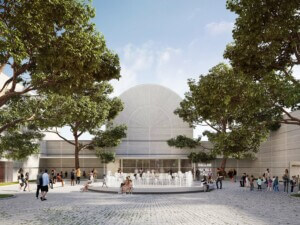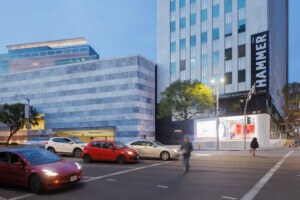Freeways were never meant to be environmental saviors. However, Michael Maltzan Architecture (MMA), working with Arup Los Angeles, has other ideas. In a proposal that advocates for the green possibilities of freeways, MMA has outlined how the Arroyo Seco Bridge in Pasadena can serve the neighborhood in more ways than one.
“What if we ask more of the Arroyo Bridge without compromising the integrity of the existing infrastructural efficiency? What if the bridge became an experiential and aesthetic asset for residents and visitors? What if we demand that the bridge do more?” MMA asked.
The two firms suggest draping the tunnel in vegetation and topping it with photovoltaic cells. Part of State Route 134 of the Ventura Freeway, the bridge accommodates ten lanes of traffic and, in MMA’s words, “is at odds with its context, polluting the surrounding neighborhoods with noise and vehicle emissions and simultaneously eroding the Arroyo landscape between the San Gabriel Mountains to the north and the Los Angeles River to the south.”
Storm water captured from the bridge canopy would irrigate the plants. The vegetation would also soak up the carbon emissions from traveling vehicles.
Other design features would include: acoustically-insulated walls that would hamper noise pollution (transparent panels would preserve views to the Colorado Bridge to the south and the Rose Bowl to the north) and “porous concrete ‘lungs’” that would make use of photocatalytic concrete will improve air quality by removing pollutants—just in case the plants can’t do their job.
Envisioning an “environmental machine,” MMA said they aim to design a “solution that celebrates the experience of driving over the Arroyo Seco while sustainably integrating the freeway into its immediate context.”
MMA also hopes that their proposal inspires others to see the potential that freeways, or any major roadways for that matter, have for developing relationships between transportation agencies, local municipalities, and state agencies. “As an approach to infrastructure, these types of enhancements are not specific to the 134, but are expandable to other freeways,” the firm said.
This article was first mentioned in the Los Angeles Times.










